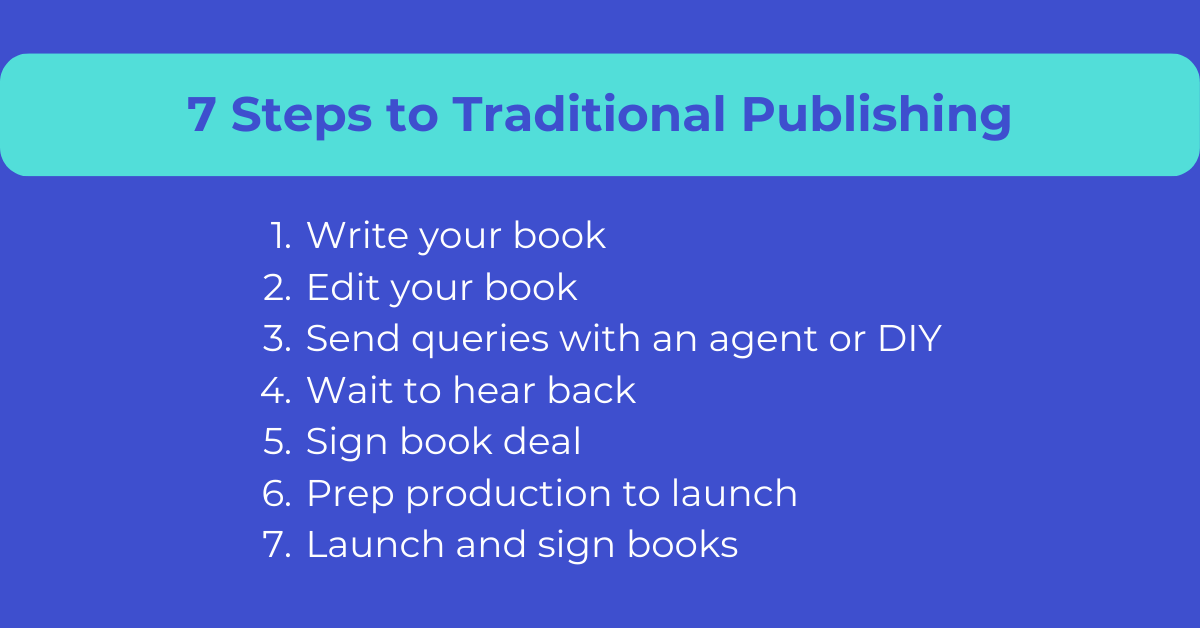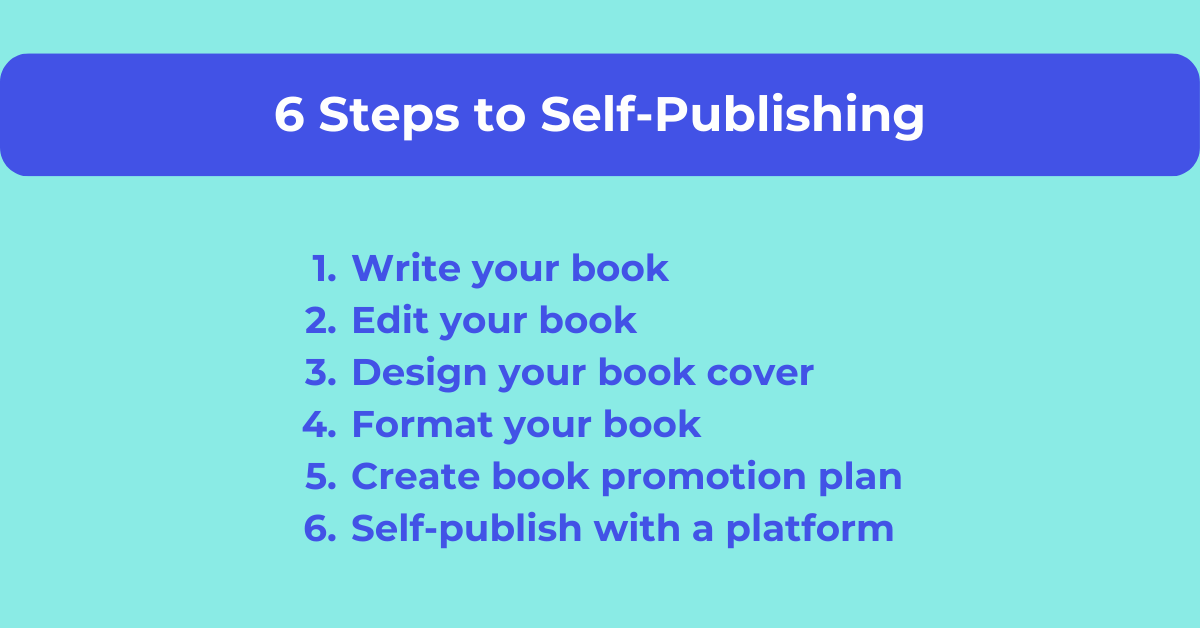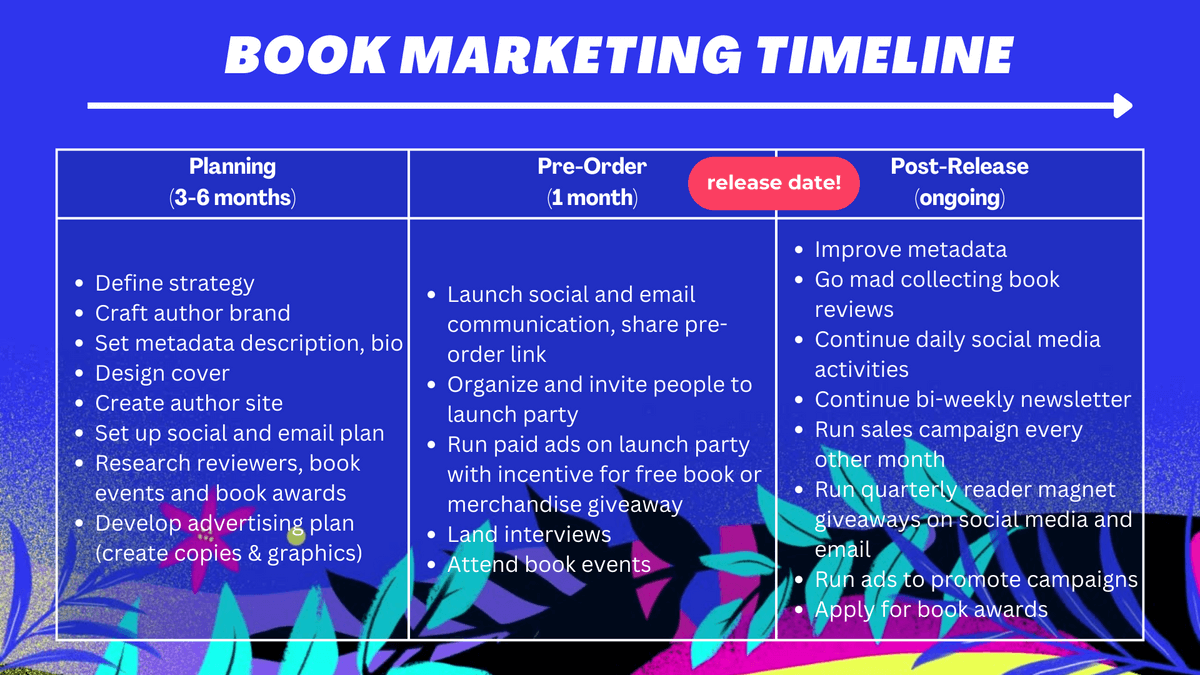How to Make Money Writing a Book (Self-Publish!)

How to make money writing a book? And how much can you make writing a book? Maybe you’ve always had a way with words. Or you’ve got epic stories to share. Whatever it is, know that in today’s world of publishing, getting published can be your reality. Here’s what to know.
Key takeaway: You can make money writing a book by publishing traditionally or self-publishing it yourself. Self-publishing is the quicker and guaranteed route to starting your publishing business.
Two Options: Traditional Publishing or Self-Publishing
To make money writing books as an author, there are two main routes to go about this.
Traditional publishing is the old-school way of getting published. It entails pitching your manuscript to various publishers or agents in hopes of landing a book deal. Once signed, the publisher handles most of the work, such as packaging and distribution.
Self-publishing is the alternative route where you take matters into your own hands. With the rise of digital technologies, anyone can self-publish. With even a budget of zero, you can easily turn your manuscript into a digital format like an ebook and get it listed in stores like Amazon.
Here’s a quick rundown of self-publishing vs traditional publishing:
| Traditional publishing | Self-publishing | |
| Rights | The publisher has the rights to your book deal. Exact conditions depend on the publisher. | You keep all the rights. |
| Decisions | Management makes most of the decisions. | You make all the decisions, from creative directions to promotional tactics. |
| Timing | Publishing a book can take years to accomplish. Landing the initial contract can be a challenge. | Your book can be on the shelves within months. You decide when you want to publish. |
| Royalties | Get around 10 to 15%, depending on the publisher and country. | Get anywhere from 35 to 70%, depending on the store. |
The pros and cons are quite obvious. Landing a contract with an established publisher can get you the budget you need for activities like marketing. Although, these days, some traditionally published authors are expected to market their books out of pocket.
Plus, there’s no guarantee your book will ever get picked up. Pitching a manuscript can take years and years to get through. If you’d like to speed up the process, opt for self-publishing. It may take more legwork, but you get to make money writing a book on your terms.
As you can see from above, traditional publishers only give you around 10 to 15% of royalties. Self-publishing gives you anywhere from 35 to 70%. When it comes to how much money can you make writing a book, it’s a lot more with self-publishing.
How Much Can You Make Writing a Book?
How much money can you make by writing a book? Let’s break it down.
Here are insights from the 2023 US author income survey:
- Full-time authors had a median income of $10,000 from their books in 2022, which jumped to $20,000 with other author-related sources, such as blogging.
- Self-published authors had an average income of $12,800 from their books and $15,000 from other author-related sources. This is a 76% income surge since 2018.
How much can you make from writing a book under traditional publishing and self-publishing? Here’s a side-by-side example:
| Traditional publishing | Self-publishing | |
| Number of books sold | 6,000 copies | 6,000 copies |
| Book price |
$14.99 | $14.99 |
| Royalty rate |
10% | 60% |
| Income per book |
$1.79 | $5.74 |
| Estimated earnings | $10,740 | $34,440 |
With a higher royalty rate, you earn more under a self-publishing model. It’s important to remember that self-publishing requires personal funding. However, it’s possible to distribute and even market a self-published book under a budget.
Steps on How to Make Money Writing a Book
Let’s go over the actual steps it takes to publish your book under both routes. The first two steps are the same –
1. Write your book
You must start by writing the bulk of your book. There are many tools and resources at your disposal. Find inspiration from these podcasts for writers. Utilize various apps in your writing process, from ebook software to AI writing tools.
2. Edit your book
After completing your manuscript, review and edit your work over and over again. A traditional publisher may provide an editor for you. If you’re self-publishing, I highly recommend hiring a professional editor. You can also self-edit your book.
Here’s what the rest of the steps look like for traditional publishing. (If you know that self-publishing is for you, skip to the next section.)
7 Steps to Traditional Publishing

3. Send queries with an agent or DIY
With your edited manuscript, you can start reaching out to agents or publishing houses. For non-fiction, you won’t necessarily need a completed book. You will need a written proposal to pitch with. The proposal should include an overview, author biography, comparative titles, target audience, marketing plan, chapter outline, and sample chapters.
If you want to get your print books into traditional bookstores and collect reviews from established entities, you can increase your chances of landing such a deal by working with an experienced agent.
To find a good query agent that fits your needs, first define the specifics of your book. What category or niche genre does it fall under? Then, research agents who are looking for books like yours. Write personalized query letters for every agent and send them out regularly. You can also choose to DIY by sending query letters straight to publishers.
4. Wait to hear back
There are big names like Penguin Random House and smaller imprints, which are divisions within a publishing house. Wherever you submit your manuscript, all you can do at this step is to be patient and wait. Keep in mind that editors have limited funds, and they only invest in a few books per year. (Tip: Look into self-publishing options while you wait.)
5. Sign book deal
When an editor finally wants to offer a deal, they’ll contact your agent first. The offer should include the money they’ll pay you, the publication date, and all other information in between. You can go back and forth to soothe out the details and sign when you feel ready.
6. Prep production to launch
This is where your publisher takes care of your final book before launch. If there are major differences in opinions, your agent works as the middleman on your behalf. Production involves components like designing the book cover, building advanced reader copies (ARCs), and crafting your promotion plan.
7. Launch and sign books
At this point, you’ve made it! You’ll sign a bunch of books. Your publishing team will most likely determine your promotional activities. You may also run a few social media accounts to engage with your readers.
Now, the self-publishing journey –
6 Steps to Self-Publishing

3. Design your book cover
After the first few steps of writing and editing your book, all that’s left is packaging your book for market. For your book cover, I suggest hiring a professional to ensure a fantastic design that’s enticing while fitting industry standards. Check out sites like Upwork or Fiverr for freelancers. If you’re under a tight budget, you can create your own design with tools like Canva. See this guide on how to design a book cover that stands out.
4. Format your book
When self-publishing, you’ll need to upload the correct book format. You can outsource this step or get it done yourself. There are different requirements for ebook, audiobook, and print formats –
Ebook: You’ll need a final epub or mobi file. You can start with a Word document and make sure it’s formatted for smooth conversion. This process looks like combing through your content and removing or adding certain elements throughout. See this guide on how to format a manuscript for ebook conversion.
Audiobook: You’ll need your content narrated and recorded into mp3 files. Each chapter should be a separate file. See this guide on how to turn a book into an audiobook. Check out how to generate AI-narrated audiobooks, a quick and cost-effective option available on all major book retailers like Amazon, Apple Books, and Google Play Books.
Print: You’ll need two pdf files. The first file should include the front cover, back cover, spine, and bleed area. The second file should include your manuscript body. See how to make a print-ready PDF for your book.
5. Create book promotion plan
How to publish a book for free and get paid for it? You need a winning promotion plan. You can start prepping your promotion plan at any point in your publishing process. As an indie, you own the entire marketing strategy of your book. I know this can sound intimidating, but no worries. Many indies are self-learners, truly on top of their marketing game. Do check out this step-by-step guide on how to create your book marketing plan.
In a nutshell:
- Develop your main strategy by researching your market, identifying your target audience, and beyond.
- Choose the tactics that best align with your strategy, such as using different social media platforms or investing in paid ads.
- Put everything into a realistic timeline that aligns with your launch and overall publishing schedule.
Here’s an example timeline:

6. Self-publish with a platform
Now you’re ready to self-publish! But where to go? Here are the best free self-publishing sites to know about:
- Amazon KDP: Amazon is the #1 place to sell your book, capturing more than half of the global book market. Do note that if you choose its exclusive deal, you can’t sell anywhere else for the first 90 days. If that doesn’t sound right for you, there is a way to reach Amazon plus everywhere else. See this guide on how to self-publish on Amazon.
- Apple Books: With the app pre-installed on billions of Apple devices, don’t miss out on listing your book here. Apple Books has a straightforward process for uploading your ebook files. For audio publishing, you must go through one of Apple’s approved partners such as PublishDrive.
- Google Play Books: Google’s reading app is pre-installed on billions of Android devices. Plus, it’s Google, the largest search engine in the world. Listing your book here can help you rank higher in organic search results.
- Barnes & Noble: As one of Amazon’s main competitors, you can reach millions of readers through Barnes & Noble’s online bookstore and NOOk store. This is a terrific choice, especially for print content.
Kobo Writing Life: By distributing to Kobo, you can reach the household name Walmart, plus other giant retailers across regions. - PublishDrive: If you’d like to reach all the big five retailers mentioned above as well as hundreds of other markets, consider using an aggregation platform like PublishDrive.
Publishing in multiple markets is a strategy called publishing wide. This is how you’ll maximize your reach and, therefore, sales potential. You can go through each publishing platform one by one, but that’ll take up a lot of your time. Instead, an aggregator like PublishDrive handles everything for you.
More on publishing wide with an aggregator ⭐
How much money can I make writing a book and self-publishing with an aggregator? Most aggregators use a royalty-share model, where you’d need to give up another 10 to 30% of royalties to the aggregator on top of the royalties you give up to individual stores.
How much can I make writing a book and self-publishing with PublishDrive? PublishDrive uses a different approach called the flat-fee model. Instead of giving up your sales, you pay a flat subscription fee that doesn’t change no matter how much you earn.
Authors earn more with subscription-based aggregation. Check how much you can earn with this book sales calculator.
Best Tips on How to Make Money Writing Books
Let’s close with best practices. Your quickest route to make money writing a book is by self-publishing. And not just basic self-publishing, but wide self-publishing. This means publishing your book in every store, country, and format possible.
What else:
- Prioritize collecting book reviews. Before investing serious time and money into your marketing efforts, make sure to land at least a handful of positive reviews. People won’t buy when there are zero reviews. Ask your network for reviews or swap with other authors. Check out PublishDrive’s book promotion services, which include a nifty tool for sending out reviews.
- Look for featuring opportunities. There are a ton of free and paid featuring placements with stores like Kobo or newsletters like Freebooksy. This is a great way to gain exposure for your book, especially when running free or discounted sales events. See these promotion success stories.
- Use a business mindset. That means staying organized and tracking your performance. Create a dedicated spreadsheet and periodically note your numbers. Or use software like PublishDrive to see sales analytics and royalty reports.
To recap everything:
- Can you make money writing a book? Yes. It takes a solid publishing plan to get your book out to the world.
- How much money can you make from writing a book? According to recent reports, the median income for authors is around $10,000 to $20,000.
- How to make money writing books? Self-publishing is one of the quickest ways to start your publishing career.
- Can you make money from publishing a book yourself? It’s never been a better time to enter the self-publishing market where digital books are in demand.
- How to publish a book and get paid? After writing a book, use a self-publishing platform to upload your files and go live. Then, don’t forget to promote your book.
Good luck!
Now You Know How to Make Money as an Author
What next? Watch just how easy it is to self-publish with PublishDrive:
✅ Sell ebooks, audiobooks, and print books under one roof.
✅ Reach the largest distribution network.
✅ Keep 100% of the net royalties you make with stores.